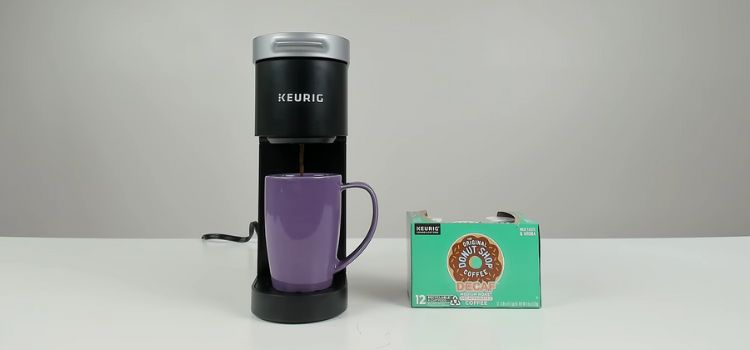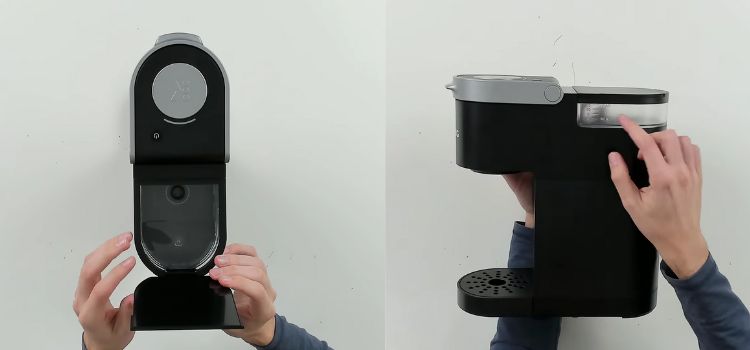As an Amazon Associate, I earn from qualifying purchases

For many, a Keurig coffee maker is an indispensable part of the morning routine. Its ability to quickly deliver a freshly brewed cup of coffee or tea at the touch of a button has made it a household favorite. Yet, nothing can be more frustrating than when your Keurig decides to slow down, turning a quick brew into a waiting game.
A slow drip can throw off your entire morning schedule and leave you yearning for that caffeine kick. In this article, we’ll explore the common causes behind a slow-dripping Keurig and provide you with practical, step-by-step solutions to get your machine back to its optimal brewing speed.
We’ll also share tips on maintaining your Keurig to prevent future slowdowns, ensuring you continue to enjoy a seamless and speedy coffee-making experience.
Common Causes of Slow Drip Issues
Several factors can contribute to your Keurig’s slow drip, and identifying these is crucial to fixing the problem. Let’s delve into the most common culprits:
- Clogged Needles: One of the most frequent causes of a slow drip is clogged needles. These needles pierce the K-cup and allow hot water to flow through, brewing your coffee. Over time, coffee grounds and debris can accumulate, obstructing the flow.
- Mineral Deposits from Hard Water: If you use hard water in your Keurig, mineral deposits can build up inside the machine. This buildup can restrict water flow and reduce brewing efficiency, leading to a slower drip.
- Dirty or Faulty Water Lines: The water lines in your Keurig can also become clogged or develop leaks, affecting water pressure and flow rate. Regular cleaning is essential to prevent such issues.
- Incompatible or Damaged Pods: Using incompatible or damaged pods can impede flow. If a pod is not properly punctured or doesn’t fit well, it can cause slow or uneven water distribution.
Step-by-Step Troubleshooting and Repair Methods

Now that we understand the potential causes, let’s tackle the solutions with detailed, practical steps:
- Cleaning the Needles: Start by turning off and unplugging your Keurig. Carefully lift the handle to access the pod holder and remove it. Use a paperclip or needle cleaning tool to gently clean the entrance and exit needles. Be cautious to avoid injury and ensure all obstructions are cleared.
- Descaling the Machine: Descaling is crucial for removing mineral deposits. Fill the water reservoir with a descaling solution or a mixture of vinegar and water. Run several brew cycles without a pod, allowing the solution to work through the system. Follow up with plain water cycles to rinse thoroughly.
- Inspect and Clean Water Lines: Detach the water reservoir and inspect the lines for any visible blockages. Use a straw to blow air through the lines, clearing any debris. Reattach the reservoir securely and test the machine’s flow.
- Replace or Reseat Pods: Ensure that you are using compatible pods. Check for any damage before brewing. If a pod appears faulty, try a new one, ensuring it’s properly seated in the holder to allow correct puncturing and flow.
Tips for Maintaining Optimal Performance
Prevention is always better than cure. Implementing a regular maintenance routine can keep your Keurig running smoothly:
- Regular Cleaning and Maintenance Schedule: Establish a cleaning routine that includes needle cleaning and descaling every three to six months, depending on usage and water hardness.
- Use of Filtered or Soft Water: Using filtered water can significantly reduce mineral buildup, prolonging the life of your Keurig and maintaining optimal performance.
- Proper Pod Selection and Storage: Choose high-quality pods and store them properly to maintain freshness and compatibility. This simple step ensures a better brewing experience.
- Avoiding Overuse and Overheating: Give your Keurig time to rest between brews, especially if you’re making multiple cups in succession. This practice prevents overheating and helps maintain consistent brewing speed.
Conclusion
A slow-dripping Keurig can be a nuisance, but with the right knowledge and tools, it’s a problem you can easily tackle. By understanding the common causes and following the troubleshooting steps outlined, you can restore your Keurig’s speed and efficiency. Regular maintenance and mindful practices will not only solve current issues but also prevent future slowdowns.
Enjoying a quick, effortless cup of coffee is what Keurig machines are all about. With these tips and solutions, you can ensure your coffee maker continues to perform at its best, delivering that perfect cup every time. Happy brewing!
FAQ
Why does my Keurig drip slowly?
A slow drip in your Keurig is often caused by clogged needles, mineral deposits from hard water, or faulty water lines. Regular cleaning, descaling, and ensuring the water reservoir is properly placed can help improve the flow and restore normal brewing speed.
Why does my Keurig drip water while heating?
Dripping water during heating could be due to a partially clogged needle or an improperly seated water reservoir. Ensure that all components are clean and correctly aligned to prevent leakage. If the issue persists, a thorough cleaning may be necessary to resolve internal blockages.
How do you make drip coffee in a Keurig?
To make drip-style coffee, use a reusable K-cup filter with your favorite ground coffee. Fill the filter, place it in the pod holder, and select your preferred cup size. This method mimics traditional drip coffee by allowing you to choose the coffee and strength.
How do you fix a slow drip coffee maker?
To fix a slow drip coffee maker, start by cleaning and descaling the machine to remove blockages and mineral buildup. Inspect and clear clogged needles and ensure the water reservoir is seated correctly. Regular maintenance and using filtered water can prevent future slow-drip issues.
As an Amazon Associate, I earn from qualifying purchases